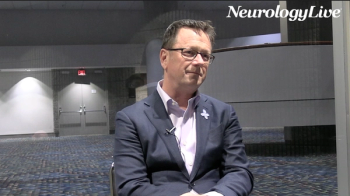
Stuart Isaacson, MD: The Essential Tremor Treatment Landscape
The director of the Parkinson's Disease and Movement Disorders Center of Boca Raton spoke to how a new generation of interventions has led to a shifting backdrop in the field of care in essential tremor.
“It often can run in families, often begins in the 20s or 30s and increases as the decades go on, and it begins to impair daily tasks.”
The most common movement disorder that movement disorder specialists such as Stuart Isaacson, MD, director, Parkinson's Disease and Movement Disorders Center of Boca Raton, need to address is essential tremor. One estimation puts this patient population size between 6.38 to 7.63 million, corresponding to approximately 2.2% of the US population.1
Despite this prevalence, there remain challenges in care. Having patients utilize wrist weights and interventions with activities of daily living often are not efficacious, and the available oral therapies are often accompanied by adverse effects. Although, there are available and effective options, such as deep brain stimulation (DBS) and focused ultrasound (FUS), which have allowed for improvements in recent years.
To find out more about the landscape of treatment in essential tremor and what remains to be addressed, NeurologyLive sat down with Isaacson. He spoke to how a new generation of interventions has led to a shifting backdrop in the field, and what’s to come in the near future.
REFERENCE
1. Louis ED, Ottman R. How Many People in the USA Have Essential Tremor? Deriving a Population Estimate Based on Epidemiological Data. Tremor Other Hyperkinet Mov. 2014;4:259. doi: 10.7916/D8TT4P4B
Newsletter
Keep your finger on the pulse of neurology—subscribe to NeurologyLive for expert interviews, new data, and breakthrough treatment updates.


































